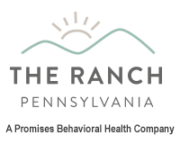Understanding trends in teenage drug use helps parents educate their children and monitor signs of possible drug use. One of the most informative publications on children and drugs is the National Institute on Drug Abuse’s Monitoring the Future Survey, an annual examination of adolescent drug use and attitudes towards drug risk. The 2012 survey indicates marijuana, synthetic marijuana and prescription medication abuse are areas of rising concern for parents. Cigarettes and Marijuana Cigarette use among 8th to 12th graders dropped to the lowest levels in survey history. When asked about past month cigarette use, only 4.9 percent of 8th graders reported tobacco use. Older children had higher rates of cigarette use: 10.8 percent for 10th graders and 17.1 percent for kids in the 12th grade. Unfortunately while cigarette use dropped, past month use of marijuana rose significantly to levels reminiscent of the 1990s. Since 2007, past month marijuana use by 10th graders rose from 14.2 percent to 17 percent. A similar increase can be seen in 12th graders, with marijuana use rising from 18.8 to 22.9 percent. The increase in marijuana abuse mirrors a decreasing perception of the drug’s potential for harm. The survey has seen this cycle before: as student perception of a drug’s dangers drop, use of the drug rises. You may want to discuss little-known marijuana risks with children, such as the addition of more dangerous drugs and the link between marijuana use and schizophrenia. Synthetic Marijuana The 2012 Monitoring the Future Survey reported synthetic marijuana use among kids in grades 8 to 10 for the first time. Approximately one in nine high school students reported using synthetic marijuana over the last year, a rate on a par with 2011. Synthetic marijuana, also known as K2 and Spice, is a mixture of plant material soaked in synthetic chemicals. The drug produces a high similar to marijuana. Packages of synthetic marijuana can be found in “head shops” and convenience stores. Despite being illegal, synthetic marijuana is easy to find, masquerading as potpourri and air fresheners. Because the packages are sold by stores, many kids assume Spice is safe. It isn’t. The packets contain a wide variety of chemicals, which can have physical effects. Some types of synthetic marijuana are 800 times more potent than the actual plant. Users report anxiety, panic attacks and hallucinations, among other symptoms. Psychotic episodes and violence have been linked to Spice use. Prescription Drug Abuse Abuse of both prescription and over-the-counter medication has risen among adolescents. Pain medication, prescription amphetamines and narcotic medication are most often abused. Although abuse rates of Vicodin, an opiate painkiller, fell among 12th graders, 7.5 percent still report using the powerful drug. Children incorrectly assume medication is safe to use or at least safer than street drugs. Easy access to medication also increases use: approximately 68 percent of 12th graders who abuse prescription drugs report receiving the drug for free from family or friends. Pain medication abuse, in turn, has led to substance abuse treatment centers seeing a rise in heroin addiction. Once addicted to expensive prescription opiates, adolescents and young adults are switching to cheaper heroin. And because heroin use had fallen in previous years, kids are less aware of the dangers of the drug. Less awareness, again, lowers risk perception and increases use. Photo: Martina PhotographyThe pictures in this blog are being used for illustrative purposes only; and any person depicted in the content, if any, is a model.

